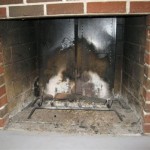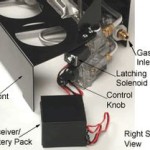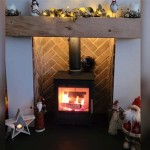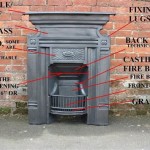Hole in the Wall Fireplaces: A Comprehensive Guide
The allure of a fireplace is undeniable. It evokes warmth, comfort, and a sense of home. While traditional fireplaces often require structural modifications and can be inefficient, the emergence of hole in the wall fireplaces offers a compelling alternative. These innovative units seamlessly integrate into existing walls, providing a beautiful and functional focal point without the hassle of major renovations. This article delves into the world of hole in the wall fireplaces, exploring their benefits, installation process, and key considerations.
The Advantages of Hole in the Wall Fireplaces
Hole in the wall fireplaces offer numerous advantages over conventional fireplaces, making them an attractive option for homeowners seeking to enhance their living spaces.
Firstly, their compact design allows for installation in virtually any room, even those with limited space. Unlike traditional fireplaces that require significant floor space, hole in the wall units are flush-mounted, maximizing available area. This makes them ideal for smaller homes or apartments where space is at a premium.
Secondly, these fireplaces are highly efficient, utilizing advanced technology to maximize heat output while minimizing fuel consumption. They feature sealed combustion systems that prevent heat loss and ensure optimal energy efficiency. This translates into lower energy bills and a reduced environmental footprint.
Thirdly, hole in the wall fireplaces offer unparalleled versatility in terms of design and aesthetics. Available in a variety of styles, finishes, and materials, these units can seamlessly blend with any décor, from contemporary to traditional. They can also be customized with different mantel options and surround materials to create a truly personalized fireplace experience.
Installation Process of Hole in the Wall Fireplaces
Installing a hole in the wall fireplace typically involves these steps:
1.
Site Preparation:
The first step involves selecting a suitable location for the fireplace and ensuring adequate ventilation. This may require consultation with a qualified professional to ensure compliance with local building codes.2.
Wall Framing:
Once the location is determined, the wall must be appropriately framed to accommodate the fireplace unit. This step typically involves cutting an opening in the existing wall and installing new framing around the opening. This ensures secure support for the fireplace and proper integration into the wall structure.3.
Fireplace Installation:
The actual fireplace unit is then installed within the framed opening. This may involve connecting the unit to gas or electric lines, depending on the type of fuel source. The installation process requires careful attention to detail and adherence to manufacturer instructions to ensure safe and efficient operation.4.
Finishing Touches:
The final step involves finishing the surrounding area to create a seamless and aesthetically pleasing look. This may involve installing a mantel, adding decorative trim, and painting or wallpapering the walls for a cohesive design.Key Considerations for Choosing a Hole in the Wall Fireplace
Several factors should be considered when choosing a hole in the wall fireplace for your home. These include:
1.
Fuel Type:
Hole in the wall fireplaces can be fueled by gas, electric, or even wood. Gas fireplaces offer convenience and efficiency, while electric fireplaces provide a more modern aesthetic. Wood-burning fireplaces, while offering a traditional ambiance, require more maintenance and may not be feasible in all areas. Consider your lifestyle, budget, and local regulations to determine the best fuel type for your needs.2.
Heating Capacity:
The heating capacity of a hole in the wall fireplace should be carefully assessed to ensure it meets the heating requirements of your space. Consider the size and insulation of the room, as well as the climate in your area. Choose a fireplace with a heat output that adequately warms the room, minimizing energy loss and maximizing comfort.3.
Design and Aesthetics:
With a wide array of styles and finishes available, you can choose a hole in the wall fireplace that complements your existing décor and personal taste. Consider the overall ambiance you wish to achieve, whether it's a sleek and modern look or a rustic and traditional feel. The chosen design and materials should seamlessly integrate into the surrounding environment and create a focal point that enhances the room's aesthetic appeal.4.
Budget:
The cost of hole in the wall fireplaces can vary significantly depending on the features, fuel type, and brand. The installation process may also add to the overall expense. It's crucial to set a budget before shopping and compare prices from different manufacturers. Consider the long-term investment and potential energy savings when evaluating the overall cost-effectiveness of different options.
Edinburgh Fireplaces Hole In Wall Modern Design

Cosy Hole In The Wall Fireplace

Studio Edge Hole In The Wall Gas Fire Inspirational Fires

Flavel Rocco Balanced Flue Hole In The Wall Gas Fire Direct Fireplaces

Hole In The Wall Installation Guide Direct Fireplaces

Hole In The Wall Gas Fires Fireplace Saver
Hole In The Wall Gas

Hole In The Wall Fires Gallery Heating Centre

Hole In The Wall Gas

Eden He Hole In The Wall Gas Fire Collection By Michael Miller Direct Fireplaces
Related Posts








